We all love our pets and want to keep them safe. One of the most popular questions we see about succulents is, ‘Are succulents poisonous to cats or pets?’ With the popularity of succulents and cacti as houseplants, it is understandable for pet owners to be concerned about succulents’ safety.
Are succulents safe to have around our cats, dogs or pets? Lucky for us, there are plenty of succulents to choose from that are non-toxic and safe for pets.

Here are 15 succulents and cacti safe to have around your beloved pets:
Echeveria
Echeverias extend from Southern Mexico to South America. Echeverias are characterized by their gorgeous rosettes with exquisite features and colors. The rosettes vary in shapes and sizes from tight and short-stemmed or hanging from stems.
The leaves also vary widely, from thin to thick, and smooth to furry. Echeverias come in many different shades and colors. Due to their popularity, there are many hybridized echeverias available.
Most echeverias are totally safe and not poisonous to cats, dogs and pets. Some popular echeverias include:
Echeveria Setosa var. Deminuta (Firecracker Plant)
This echeveria is covered with a soft, hairy fuzz giving it its distinct look. It got its common name from the flowers it produces, which are a burst of bright red and yellow flowers. These are native to Mexico and not frost hardy.
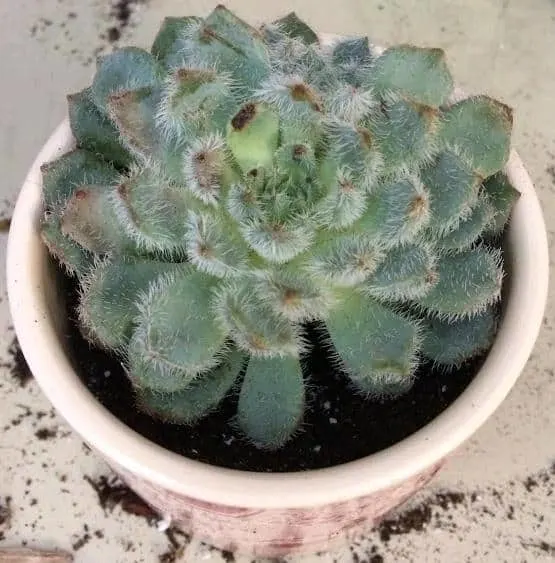
Echeveria Elegans (Mexican Snowballs)
Echeveria Elegans are native to Mexico. These are attractive echeverias with bluish-green, succulent leaves. The leaves turn pinkish on the tips as the plant matures.
They produce beautiful, showy pink flowers. These echeverias multiply easily by producing offsets.
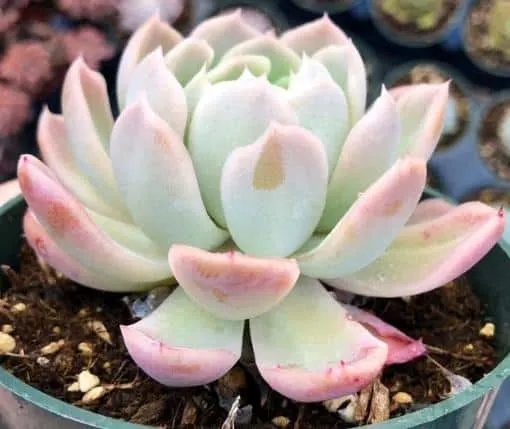
Echeveria Pulvinata (Plush Plant or Ruby Blush)
These are attractive plants that grow in small shrubs and have hairy green leaves with silvery white fuzz and red tips. Velvety in texture with red, yellow and orange bell-shaped blooms.
Most of the common Echeveria species are not complicated succulents to grow. Native to Mexico, these plants are not frost hardy and need to be protected from freezing temperatures.
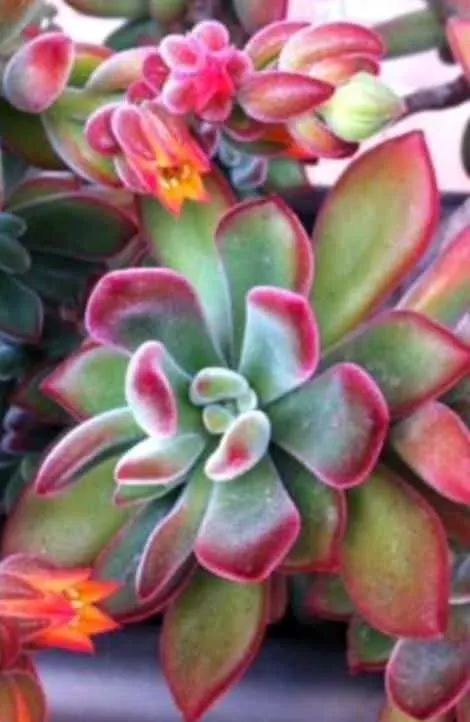
Aoeniums
Most aeoniums are native to the Canary Islands; some are found in Madeira, Morocco and East Africa. Aeoniums are most commonly known for their striking rosettes made up of dense, waxy leaves growing out of a single stem. Aeoniums come in a number of varieties, colors, shapes and sizes.
Almost all types of aeoniums are safe for cats, dogs and pets. Some of the popular varieties are:
Aeonium ‘Kiwi’
These aeoniums have beautiful color combinations of yellow, green and red. The leaves are more yellow in the center of the plant and more green in the middle, while the edges of the leaves are lined with red margins. These aeoniums produce offsets readily and can multiply rapidly during the growing season. They produce bright yellow flowers around spring time.
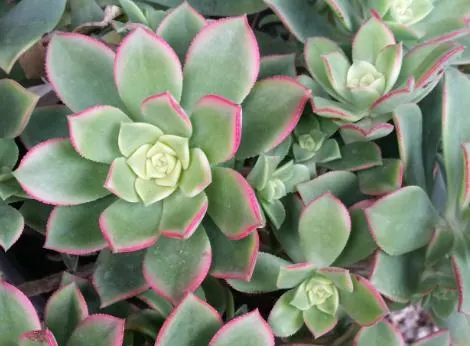
Aeonium Arboreum ‘Zwartkop’ (Black Rose)
Aeonium arboreum ‘Zwartkop’s’ (Black Rose, Black Tree Aeoniums) distinctive feature is their beautiful dark purple, almost black foliage. Like all aeoniums, Aeonium arboreum ‘Zwartkop’ has striking rosettes that look like flowers and are made up of waxy leaves. Stems can grow over 3 ft. (91cm) long. These are monocarpic plants and die after they flower but they produce offsets readily before they flower.
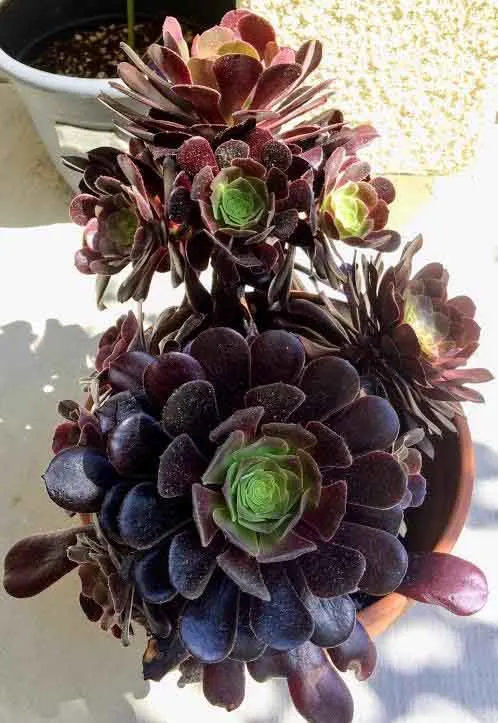
Aeonium Canariense (Giant Velvet Rose)
Native to the island of Tenerife in the Canary Islands, these aeoniums can grow really large rosettes. The leaves are mostly green in color but can turn brownish red on the edges when exposed to full sun. Like most aeoniums, they are monocarpic and die after flowering.
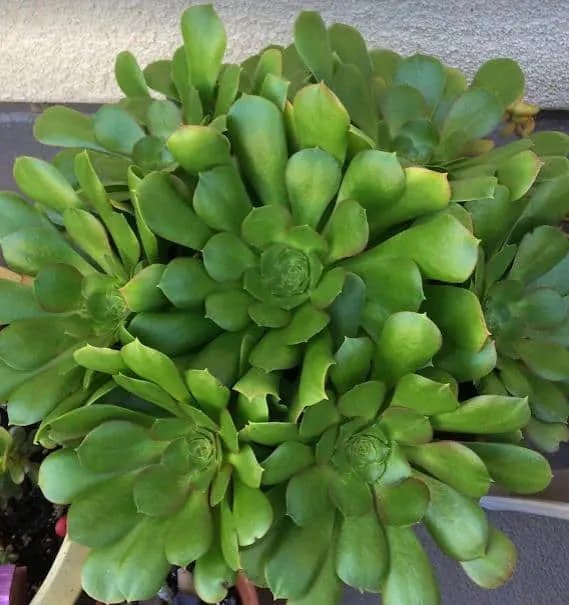
Sedum Morganianum (Donkey’s Tail, Burro’s Tail, Lamb’s Tail)
Native to Southern Mexico, these unusual looking plants are very popular and mostly used in hanging baskets. They are perennial evergreens with abundantly long, hanging stems that can grow up to 3 feet long. They have plump, tightly compact blue-green leaves that are spherical in shape.

Graptopetalum Paraguayense (Ghost Plant)
A beautiful perennial native to Mexico with thick, fleshy, triangular leaves that form pretty rosettes. The stems hang or trail as they grow and mature. Their colors are in pretty pastels and can range from pale blue to light purple. In full sun they turn slightly translucent and pinkish. In extreme heat and full sun with little moisture they turn gray with pink overtones.
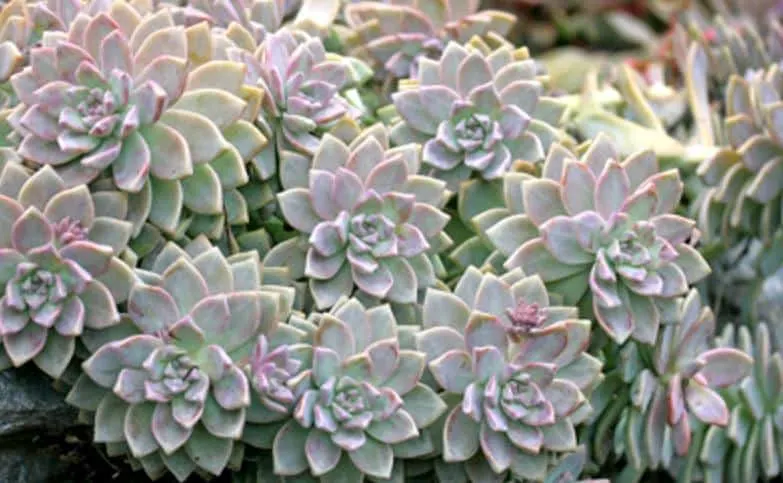
Haworthia
Most haworthias are native to the southern regions of Africa. Haworthias are very popular indoor succulents because of their ability to grow in low light. They are also slow growers and do not grow too large, making them ideal houseplants. They are safe to have around cats, dogs or pets. Some of the popular varieties are:
Haworthia Attenuata (Zebra Plant)
Now known as Haworthiopsis Attenuata, they resemble an aloe plant at first glance. They are actually from the same subfamily. The plant’s unique feature is the pointed green leaves with white warty spots on the leaves. They produce offshoots and pups readily when mature. These plants prefer plenty of indirect sunlight. They can tolerate some shade and low light, but not for very long.
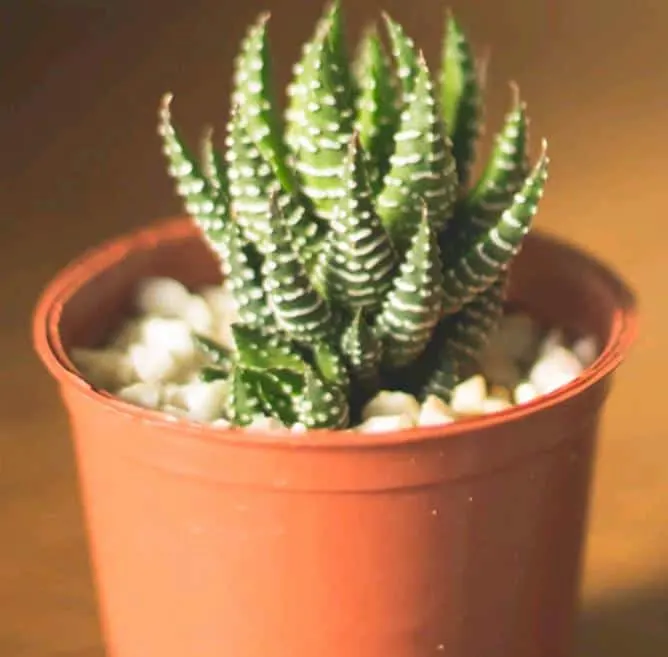
Haworthia Cymbiformis
Native to South Africa, haworthia cymbiformis are characterized by clumps of dense rosettes with very thick, juicy boat-shaped green leaves (“cymbiformis” actually means boat-shaped). The leaves have glass-like appearing streaks on their tips giving them a unique appearance.
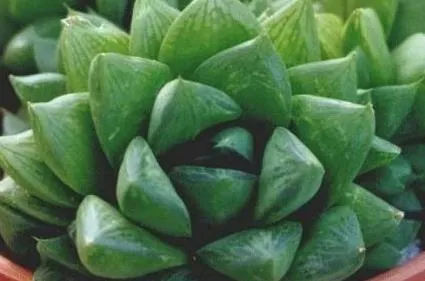
Haworthia Truncata (Horse’s Teeth)
Native to the Western Cape of South Africa, haworthia truncata have unusual looking leaves that appear truncated from the top. The leaves are almost square or rectangular shaped, green in color with white specks on the truncated top.

Sempervivums (Hens and Chicks)
Sempervivums (Hens and Chicks) are a large genus of succulent plants. Sempervivums are very popular and many hybrids have been formed. They are cold hardy, drought and heat resistant making them popular outdoor plants. They multiply by growing clusters of small baby chicks around the mother plant, giving them their name “Hens and Chicks”.
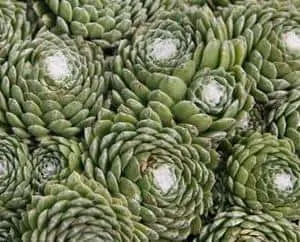
The clusters of rosettes can remain small or can grow up to 8in (20cm) wide. Hens and chicks are easy to grow and come in many different varieties of colors, sizes and textures to choose from.
Schlumbergera (Christmas or Holiday Cactus)
Schlumbergera belongs to a small genus of cacti. Native to the tropical rainforests of Brazil, they require some humidity and will not tolerate intense heat and frost. Schlumbergera species are different from other cacti in their appearance and habits.
They are epiphytes, meaning they grow on trees in wet and humid regions, or on rocky grounds as lithophytes. The stems of Schlumbergera form joints that can be flat, leaf-shaped or bottle-shaped. The stems are green all year round.
Christmas Cactus
One of the most common varieties are the Christmas and Thanksgiving Cactus, which have become very popular houseplants for their beautiful, showy flowers. They make great indoor houseplants and are commonly grown in pots. This tropical cacti does not do well in full sunlight and need protection from intense afternoon sun. They do well in partial shade. They can grow quite large and live for a very long time.
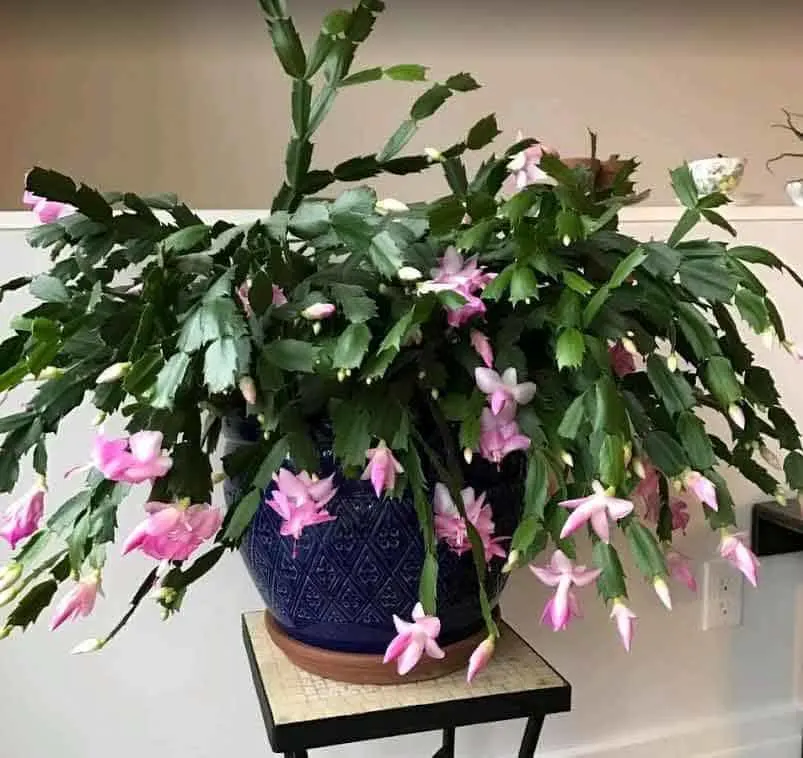
Beaucarnea Recurvata (Ponytail Palm Tree)
Despite the name and appearance, ponytail palm trees are not palm trees but are actually succulents from the Agave family. The most noticeable characteristics of this plant are its bulbous trunk, which is used to store water, and its thin and long, hair-like leaves that grow from the top of the trunk like a ponytail, giving it the appearance of a ponytailed palm tree.
These plants are easy to care for and require little watering. They are forgiving plants and will tolerate low light conditions. They generally need bright light but can tolerate medium to low light even for half of the year, making them ideal indoor houseplants. It is safe to have these plants in the house with your pets.
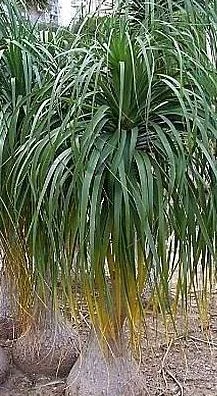
Mesembryanthemaceae (Lithops)
Lithops also known as Living Stones are very popular succulents due to their unusual features and unique shapes. They are stem-less and are made up of thick leaves that grow in pairs. These are slow growing plants, making them ideal container plants.
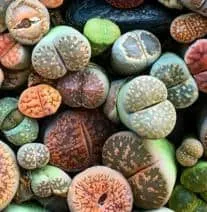
Older plants grow in clumps of “pebbles or stones” giving them their signature look. Lithops will tolerate intense heat and bright, indirect light as well as cold temperatures, but only briefly. These are non-toxic to cats and dogs.
Gasteria
Gasteria got its name from the flower it produces, which resembles the shape of a stomach. “Gaster” is Latin for stomach. They have long, thick, grooved leaves and curved, stomach-shaped flowers. Most gasteria species prefer bright but indirect light and need to be protected from full sun. They can do well indoors and are safe to have around your cats, dogs or pets.
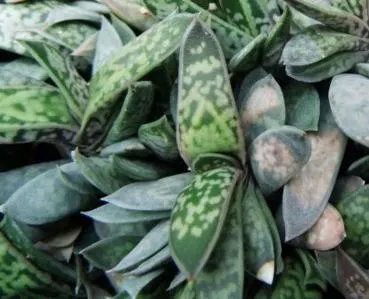
Opuntia (Prickly Pear Cactus)
Opuntia (Prickly Pear Cactus) can be easily identified from other cacti species by its round, flattened joints called pads. The fleshy pads grow in segments or columns. These plants have long been cultivated in Mexico as a food source for their edible fruits and also used as natural sweeteners.
They are safe for humans and pets alike, just watch out for their sharp spines. They can spread quickly and grow really large. To help control growth, they can be grown in containers.
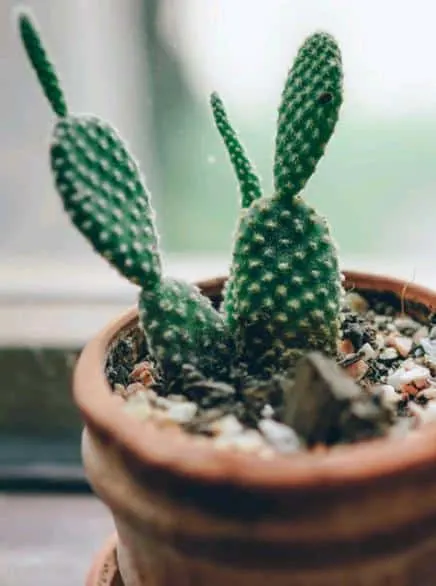
These are some of the most common or popular succulents that are safe to have around cats, dogs and pets. There are many more out there. You can check the ASPCA’s website for more information on plant toxicity to pets. If you suspect poisoning, contact your local veterinarian right away or your local poison control helpline.
Still concerned about the safety of succulents around your pets? Visit my post for a list of toxic succulents: “9 Succulents Toxic to Cats, Dogs and Pets”.
Do you have a plant chewer/digger/destroyer? Check out my post on “Are Succulents Poisonous to Cats? How to Keep Cats Away”.
Wondering where to buy some of these succulents online? Check out my resource page for recommendations on where to purchase succulents.
Want to remember this pin? Pin it to your favorite Pinterest board now!
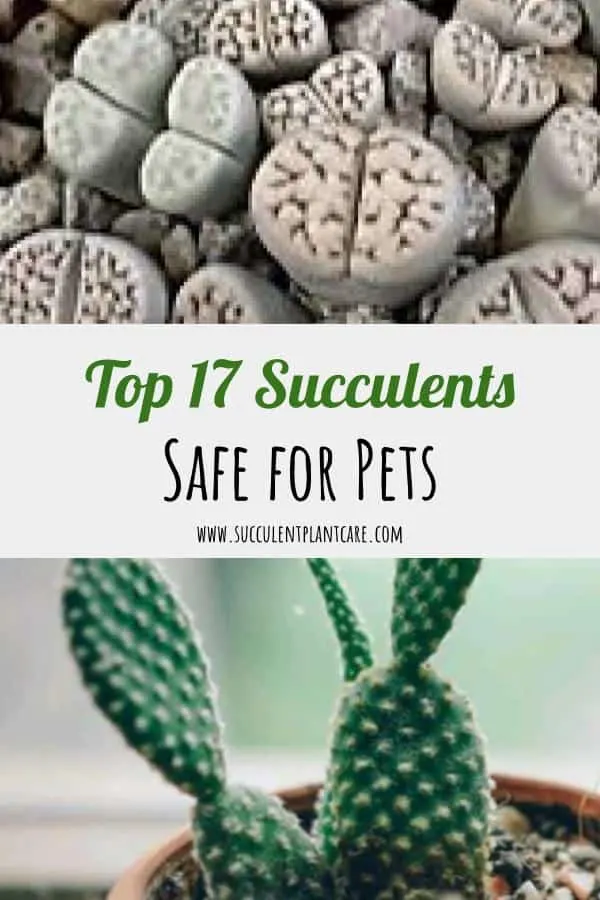
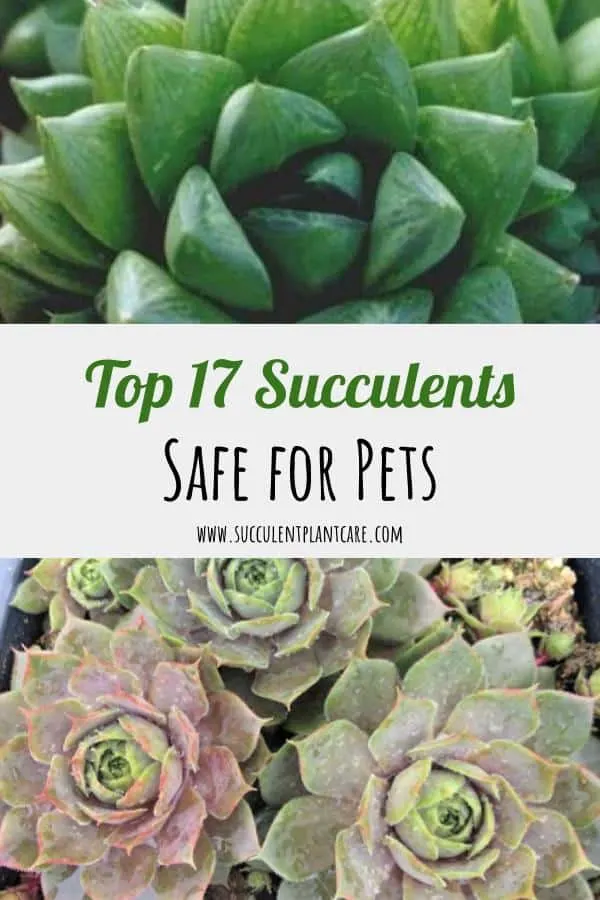
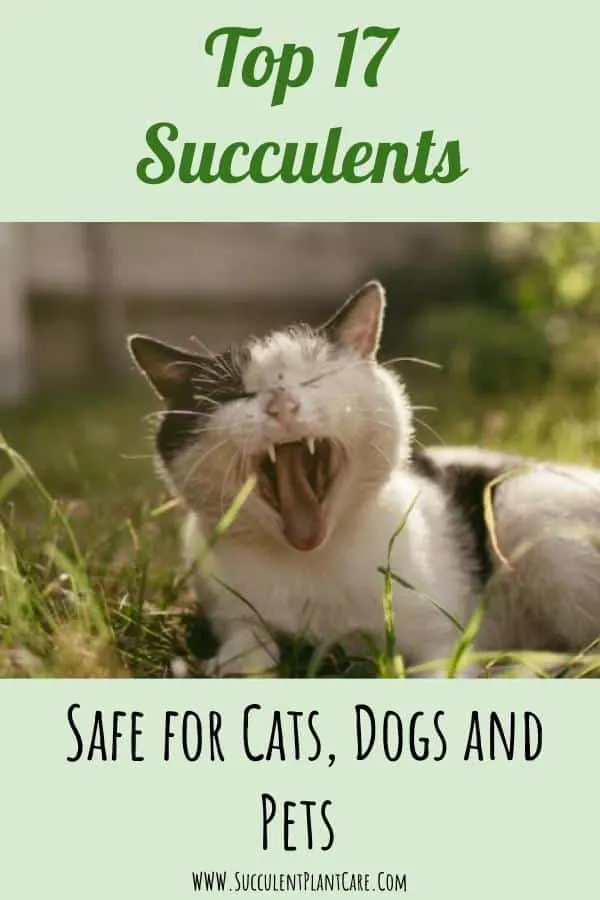
Photo by Daniil Lebedev on Unsplash
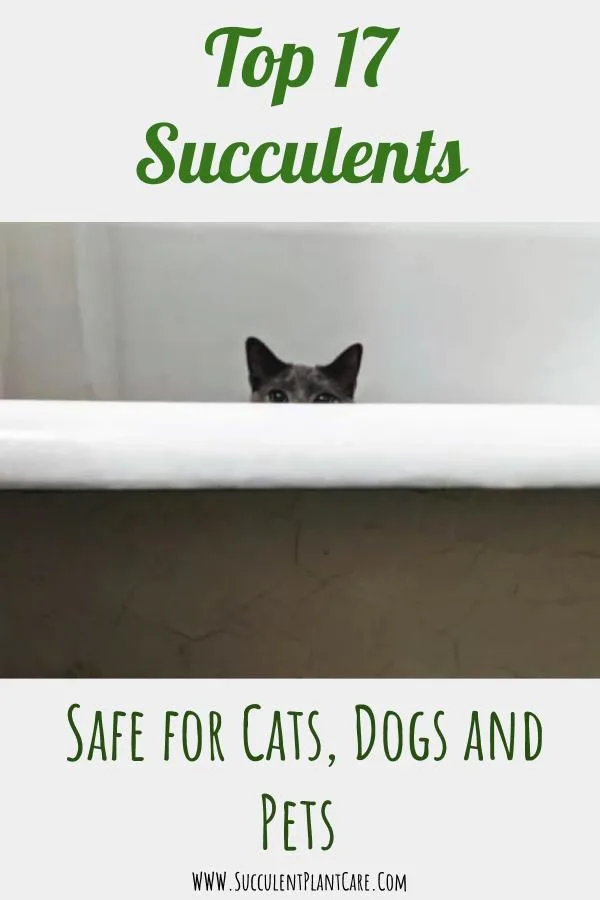
Photo by Iz & Phil on Unsplash
